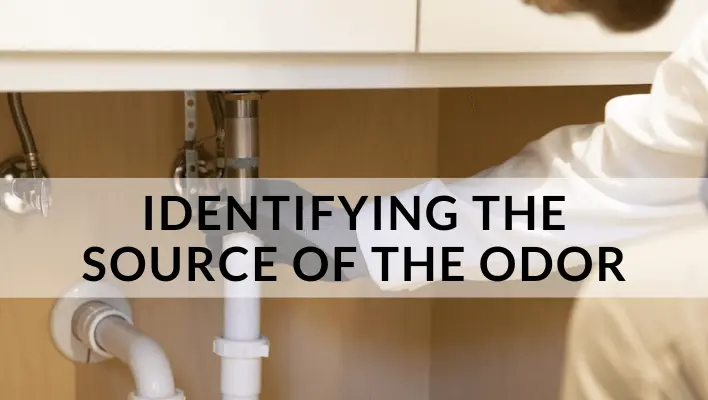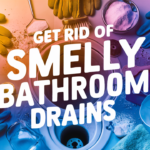Why Does My Bathroom Smell Like Sewage?

Walking into your bathroom and being greeted by a foul odor reminiscent of sewage can be a disconcerting experience. It’s a problem that many homeowners face but often struggle to understand and resolve. In this comprehensive guide, we’ll delve into the reasons behind that why Does My Bathroom Smell Like Sewage and provide practical solutions to eliminate them.
Content
Identifying the Source of the Odor

Sewage odors in bathrooms can stem from various sources, necessitating a thorough inspection to pinpoint the exact cause. By examining plumbing fixtures, drains, and sewage systems, you can determine the source of the unpleasant smell and take appropriate action to address it.
Common Causes of Why Bathroom Smell Like Sewage
Dry Drain Traps:
Dry drain traps occur when the water in a P-trap evaporates, allowing sewer gases to escape into the bathroom. P-traps are U-shaped pipes located beneath sinks, showers, and floor drains, designed to hold water and create a barrier against sewer odors.
Symptoms: The telltale sign of a dry drain trap is a sewage smell emanating from drains, especially after periods of inactivity. Running water down the drain should refill the trap and eliminate the odor.
Blocked Vents:
Plumbing vents play a crucial role in maintaining proper airflow and pressure within the sewage system. When vents become blocked or obstructed, sewer gases can accumulate and find their way into the bathroom through drains and fixtures.
Symptoms: Blocked vents may cause gurgling noises from drains, slow drainage, and sewage odors throughout the bathroom. Clearing the vent obstruction should restore proper ventilation and alleviate the odor.
Sewer Line Issues:
Cracked or damaged sewer lines can allow sewage odors to infiltrate the bathroom. This is a more serious issue that may require professional intervention to diagnose and repair.
Symptoms: Persistent sewage smell, sewage backup, and wet spots or pooling water near the foundation are indicative of sewer line issues. A thorough inspection by a licensed plumber is recommended to identify and address the problem.
Damaged Plumbing Seals:
Seals around plumbing fixtures, such as toilets, sinks, and shower drains, can degrade over time, allowing sewer gases to escape into the bathroom.
Symptoms: Sewage odor around plumbing fixtures, accompanied by water leaks or moisture, may indicate damaged seals. Repairing or replacing the seals should eliminate the odor and prevent further leaks.
Mold and Mildew Growth:
Mold and mildew thrive in damp, humid environments, such as bathrooms with poor ventilation or water leaks. In addition to causing health issues, mold and mildew can contribute to unpleasant odors in the bathroom.
Symptoms: A musty or earthy smell, visible mold or mildew growth on surfaces, and allergic reactions in sensitive individuals are indicative of mold and mildew issues. Proper cleaning and ventilation can mitigate mold growth and eliminate associated odors.
Solutions and Remedies
Addressing sewage odors in the bathroom requires identifying and resolving the underlying cause. Here are some practical solutions and remedies:
Pouring Water Down Drains:
If dry drain traps are the culprit, simply pouring water down the drain to refill the trap can eliminate the odor. Running water down unused drains regularly can prevent the traps from drying out.
Clearing Clogged Vents and Pipes:
Clearing any obstructions from plumbing vents and pipes restores proper airflow and ventilation, reducing sewage odors in the bathroom.
Inspecting and Repairing Damaged Plumbing Components:
Inspecting plumbing fixtures and seals for signs of damage and repairing or replacing them as needed can prevent sewer gases from escaping into the bathroom.
Cleaning and Disinfecting Surfaces:
Cleaning affected surfaces with a mixture of water and detergent, followed by disinfection with a solution of bleach and water, can eliminate mold and mildew growth and associated odors.
Preventive Maintenance Tips
To prevent sewage odors from recurring, consider the following preventive maintenance tips:
Regular Cleaning and Maintenance:
Regularly clean and maintain drains, pipes, and plumbing fixtures to prevent the buildup of debris and organic matter that can lead to sewage odors.
Proper Ventilation:
Install exhaust fans in bathrooms to remove moisture and improve airflow, reducing the risk of mold and mildew growth and associated odors.
Periodic Inspection of Plumbing Fixtures:
Periodically inspect plumbing fixtures for signs of damage or wear and tear, such as leaks or corrosion, and address any issues promptly to prevent sewage odors.
Prompt Addressing of Plumbing Issues:
Address plumbing issues, such as leaks or clogs, promptly to prevent further damage and mitigate odors.
Seeking Professional Help
If sewage odors persist despite DIY remedies or if significant issues with sewer lines or plumbing infrastructure are suspected, it may be necessary to seek assistance from a professional plumber or contractor. A comprehensive inspection and maintenance of plumbing systems can identify underlying problems and ensure effective solutions to eliminate sewage odors in the bathroom.
Conclusion
There maybe various causes that can be attributed to; why bathroom smell like sewage, including dry drain traps, blocked vents, sewer line issues, damaged plumbing seals, and mold and mildew growth. By identifying the source of the odor and implementing practical solutions and preventive maintenance tips, you can eliminate sewage odors and ensure a clean and fresh-smelling bathroom environment. Remember to seek professional help if needed to address underlying plumbing issues and maintain optimal sanitation and hygiene in your home.












